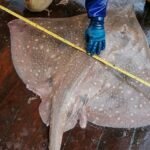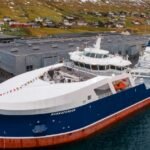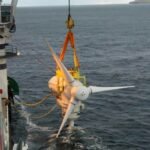Drone technology is reaching new heights as Windracers, a UK-based company, tests its Ultra prototype in the challenging landscapes of Scotland’s Orkney Islands. These trials aim to explore the potential of autonomous aircraft to transform logistics in remote areas.
Breaking Ground in Autonomous Logistics
Windracers’ Ultra drone, designed to carry up to 220 pounds over a distance of 620 miles, could redefine how goods are transported to isolated communities. The Orkney Islands, known for their rugged beauty and dependence on ferries and vans, provide an ideal testing ground for such innovation.
The trials, which operate beyond the pilot’s line of sight, demonstrate how drones can bridge logistical gaps. Residents often rely on traditional methods like ferries that are subject to delays due to weather. This drone offers a glimpse into a future where those delays are mitigated.

Key Features of the Ultra Drone
Windracers’ Ultra is built for efficiency, focusing on specific logistical needs.
- Payload Capacity: Carries up to 220 pounds, suitable for medical supplies, food, and other necessities.
- Range: A 620-mile capability means the drone can serve multiple islands without frequent recharges.
- Autonomous Systems: Equipped with advanced software for navigation and monitoring.
These features ensure the Ultra drone could perform tasks that ground vehicles or smaller drones might struggle with, especially in areas with minimal infrastructure.
Why Orkney?
Testing in Orkney is not just about logistics; it’s also about resilience. The island chain, often buffeted by strong winds and unpredictable weather, provides real-world challenges for the Ultra. If the drone performs well here, it could function effectively in many other remote locations worldwide.
- Orkney has over 70 islands, but only 20 are inhabited.
- Transport is largely dependent on ferries and light aircraft, which face frequent delays.
- The islands’ geography and scattered population make them a prime candidate for drone logistics.
A one-sentence observation: Weather disruptions in Orkney have long challenged traditional logistics.
Beyond Testing: Future Possibilities
The implications of Windracers’ work extend beyond Scotland. If successful, the Ultra drone could pave the way for large-scale adoption of autonomous delivery systems in other regions.
- Emergency Response: Faster delivery of critical supplies during disasters.
- Healthcare: Timely transport of medical samples and prescriptions.
- E-commerce: Improving delivery times for isolated communities.
A table summarizing Windracers Ultra:
| Feature | Specification | Potential Impact |
|---|---|---|
| Payload Capacity | 220 pounds | Delivers heavier goods efficiently |
| Range | 620 miles | Covers large areas without recharging |
| Autonomy Level | Beyond visual line of sight | Reduces need for human intervention |
| Targeted Use Case | Remote areas | Solves logistical challenges for islands |
What’s Next for Windracers?
While these trials are ongoing, Windracers is eyeing broader applications. Regulatory approvals, scaling up manufacturing, and integrating these drones into existing logistics networks will be critical next steps.
By addressing the current logistical bottlenecks in remote locations, the Ultra prototype is not just a test—it’s a potential shift in how the world handles deliveries.


















